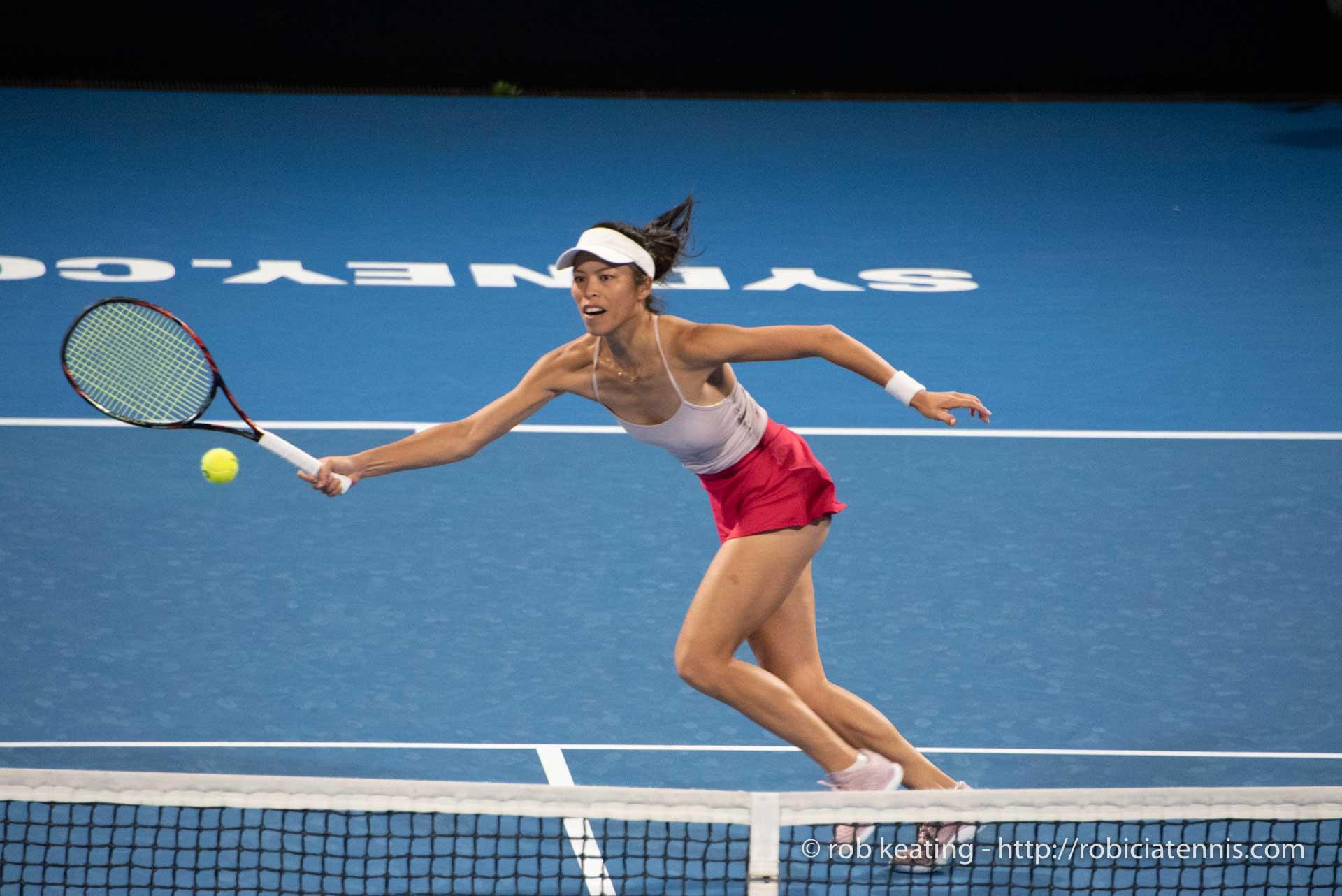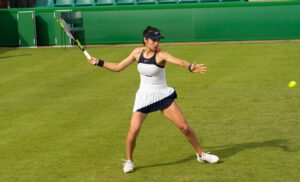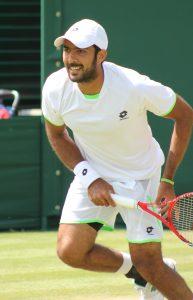We may earn money or products from the companies mentioned in this post.
Introduction

Welcome, fellow tennis enthusiasts! Whether you’re a seasoned player or simply curious about this captivating sport, you’ve come to the right place Tennis has a rich history and a global presence that continues to captivate millions around the world In this article, we will explore the origins of tennis, its popularity, and address some common questions regarding its difficulty level
A Brief Overview of Tennis as a Sport
Tennis traces its roots back to 12th century France, where it was initially played by hitting a ball with the palm of the hand Over the centuries, various adaptations and rule changes transformed it into the modern-day game we know today
With Wimbledon being the oldest tennis tournament in existence since 1877 and Grand Slam events capturing international attention, tennis has solidified its position as one of the most prestigious sports in the world From iconic rivalries like Federer vs Nadal to Serena Williams’ dominance on the women’s side, tennis has become synonymous with athleticism and finesse
The Popularity and Global Presence of Tennis
Tennis’s popularity extends far beyond just its historical significance It is now played and followed in countries across all continents The sport’s global reach can be attributed to both its accessibility and universal appeal
From local parks to state-of-the-art stadiums hosting international tournaments, people from all walks of life can enjoy playing or watching tennis The fast-paced nature of matches combined with moments of intense strategy make it thrilling for spectators while providing players with physical challenges that require skillful techniques
Purpose of the Article

Now let’s delve into an intriguing question often asked by those considering taking up tennis – how difficult is it really? Many beginners are curious about what they can expect when they step onto the court for the first time In this article, we aim to provide insights into the difficulty level of tennis, dispel any misconceptions, and offer guidance to those embarking on their own tennis journey
Physical and Mental Demands of Tennis

Tennis is a sport that demands both physical prowess and mental fortitude Players must possess a combination of athletic abilities and psychological resilience to excel on the court Let’s explore the various aspects that make tennis such a demanding sport
Athletic Abilities Required for Tennis
1 Strength and Conditioning:
In order to generate powerful serves and execute strong hitting strokes, tennis players need to have well-developed upper body strength Additionally, lower body strength is crucial for quick movements and explosive bursts of speed during rallies
2 Speed, Agility, and Coordination:
Tennis requires players to be swift, agile, and coordinated in their movements Footwork plays a vital role in positioning oneself on the court effectively Training exercises focused on improving speed, agility, and coordination are key to enhancing performance in these areas
Mental Aspects of the Game
1 Focus and Concentration During Matches:
Maintaining focus and concentration throughout an entire match can be challenging in tennis Players must learn how to block out distractions, stay present in the moment, and make split-second decisions under pressure
a) Handling Pressure Situations:
In high-pressure situations such as tie-breakers or crucial points, mental composure becomes even more critical The ability to handle pressure with calmness can often be the difference between success and failure on the court
b) Strategies for Maintaining Focus Throughout Long Matches:
Tennis matches can sometimes stretch over several hours, testing the mental endurance of players Developing strategies like focusing on one point at a time or using visualization techniques can help maintain concentration over extended periods
Successful Mindset for Competition
1 Developing Mental Toughness to Overcome Challenges:
Tennis is a sport that presents numerous challenges, both on and off the court Developing mental toughness allows players to overcome setbacks, stay resilient in the face of adversity, and bounce back stronger from defeats
By understanding the physical demands of tennis and nurturing their mental strength, players can optimize their performance on the court It’s through this holistic approach that they can truly excel in this captivating sport
Tennis Techniques, Skills, and Strategies

Basic Shots in Tennis
In tennis, mastering the basic shots is essential for any player looking to improve their game These shots include the forehand, backhand, serve, and volley Let’s break down each shot technique and highlight key points to remember
Forehand:
The forehand is a powerful stroke that involves swinging your racket across your body from the dominant side To execute a solid forehand, focus on keeping your eye on the ball, using proper footwork to position yourself correctly, and ensuring a smooth follow-through
Backhand:
The backhand is a stroke executed with the non-dominant hand Whether it’s a one-handed or two-handed backhand, maintaining good form is crucial Keep your wrist firm, rotate your shoulders as you swing through the ball, and aim for consistency in both timing and contact point
Serve:
The serve sets the tone for every point in tennis With proper technique, you can generate power and accuracy Remember to use your legs to generate force while maintaining a loose grip on the racket handle Focus on hitting different spots of the service box to keep opponents off balance
Volley:
The volley is an important skill used when playing at the net Quick reflexes and soft hands are key here Keep your racket head up while making contact with the ball in front of you Practice volleys by setting up drills that simulate game-like situations
Advanced Shots
Once you have mastered the basics, it’s time to add some finesse to your game with advanced shots like drop shots, lobs, smash shots, and slice backhands
Drop Shot:
The drop shot is a sneaky shot that requires touch and control Use it to catch your opponent off guard by gently dropping the ball just over the net with underspin Timing and disguise are crucial in executing a successful drop shot
Lob:
The lob is an effective defensive shot when your opponent is at the net It involves hitting the ball high and deep, forcing your opponent to retreat Practice the lob by focusing on a smooth swing path and timing to achieve accuracy and height
Smash:
The smash is an offensive shot used to finish points at the net This powerful overhead shot requires good footwork, timing, and technique Aim for precision by watching the ball closely as it descends from its highest point before executing a forceful smash
Slice Backhand:
A slice backhand adds variety to your shots and can keep opponents guessing Focus on maintaining a low-to-high swing path while slicing underneath the ball, creating backspin This shot can be particularly effective on low-bouncing balls or when playing on grass or clay courts
Tactics & Strategies Employed by Top Players
Beyond mastering individual shots, understanding tactics and strategies employed by top players can elevate your game even further
Different Playing Styles:
Players have different styles of play, such as baseline play or serve-and-volley style Understanding these styles allows you to anticipate how opponents will approach each point, enabling you to adjust your own strategy accordingly
Adapting Game Plans:
Analyze your opponent’s strengths and weaknesses during matches Adjusting your game plan based on this analysis gives you an edge on the court Exploit weaknesses by targeting shots to those areas and play to your own strengths, keeping your opponent off balance
By honing your basic shots, expanding your repertoire with advanced techniques, and employing effective strategies, you can become a well-rounded tennis player capable of dominating on the court So grab your racket, practice diligently, and watch your game soar to new heights!
Mastering the Game: Practice, Coaching & Resources

Importance of Consistent Practice Sessions
Consistency is key when it comes to improving your tennis skills Regular practice sessions help develop muscle memory and refine your technique Whether you’re a beginner or an advanced player, dedicating time to solo practice is essential
1 Techniques for Effective Solo Practice
Solo practice allows you to focus on specific aspects of your game, such as footwork, strokes, and serves Utilize drills that target these areas – practicing forehands against a wall or serving into specific target zones can greatly enhance your control and precision
2 Partner Drills & Match Simulations
Tennis is ultimately a game played against opponents, so incorporating partner drills and match simulations into your training routine is crucial By practicing with a partner, you can work on rallying skills, strategy development, and adapting to different playing styles
The Role of a Coach in Player Development
A knowledgeable coach can accelerate your progress by providing guidance, expertise, and objective feedback tailored to your individual needs They play an integral role in unlocking your potential and taking your game to the next level
1 Qualities of a Good Tennis Coach
A good tennis coach possesses not only technical knowledge but also excellent communication skills and a genuine passion for the sport They should be patient, supportive, and able to adapt their coaching style to suit different players’ learning preferences
2 How to Find the Right Coach for Your Skill Level and Goals
Finding the right coach requires careful consideration of factors such as experience level, coaching philosophy, availability for personalized attention, and compatibility with your goals Seek recommendations, interview potential coaches, and assess their track record to make an informed decision
Additional Resources for Learning & Improvement
Aside from practice and coaching, there are various resources available that can supplement your learning and help you further enhance your skills on the court
1 Recommended Books, Online Courses, and Video Tutorials
Books written by renowned tennis professionals, online courses taught by experts, and video tutorials featuring drills and strategies can provide valuable insights and tips to refine your game Take advantage of these resources to expand your knowledge base
2 Joining Local Clubs or Leagues for Competitive Experience
Joining local tennis clubs or leagues offers not only opportunities for competitive play but also a chance to connect with fellow enthusiasts who share your passion for the sport Engaging in friendly matches and tournaments can foster growth, motivation, and a sense of community
Useful Links

Is Tennis Hard? Here’s What You Need to Know
Is Tennis a Hard Sport? – A Tennis Players Perspective
Is Tennis A Hard Sport To Learn
The Most Difficult Thing In Tennis
Tennis: One of the Most Underrated Sports in the World
Learn How to Play Tennis Quickly for Beginners
Is Tennis A Hard Sport? [2023 Updated] –
How to Start Playing Tennis (Or Pick the Racquet Up Again)
Why Tennis Is The Hardest Sport To Learn (With 7 Examples)
Hardcourt
Hard Tennis Balls For Cricket
Is Tennis a Hard Sport to Learn? – TennisLovers
How hard is it to become a professional tennis player …
Is Table Tennis Difficult? (and How Hard Is It?) – PingPongIt
Squash or tennis, which one is the harder sport?
Tips and Gear for Tennis Beginners
Tennis Court Surface: Pros And Cons Of The Different …
What it’s like starting tennis as an adult






